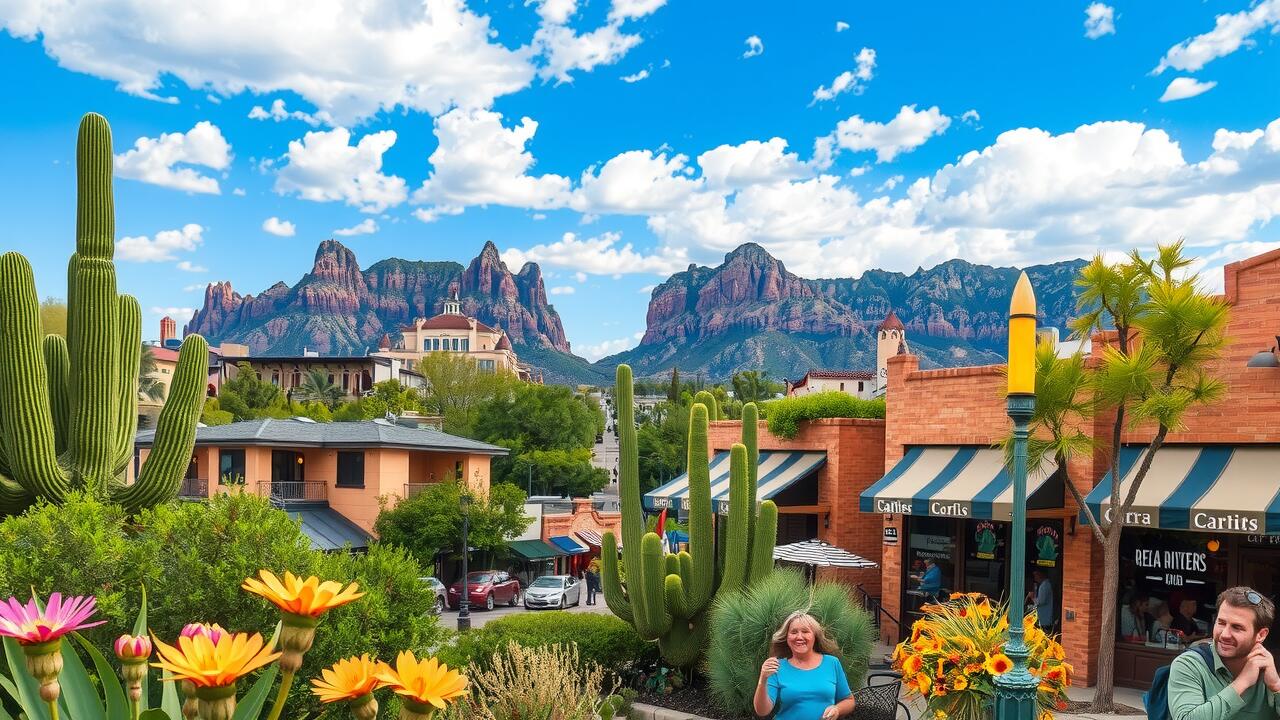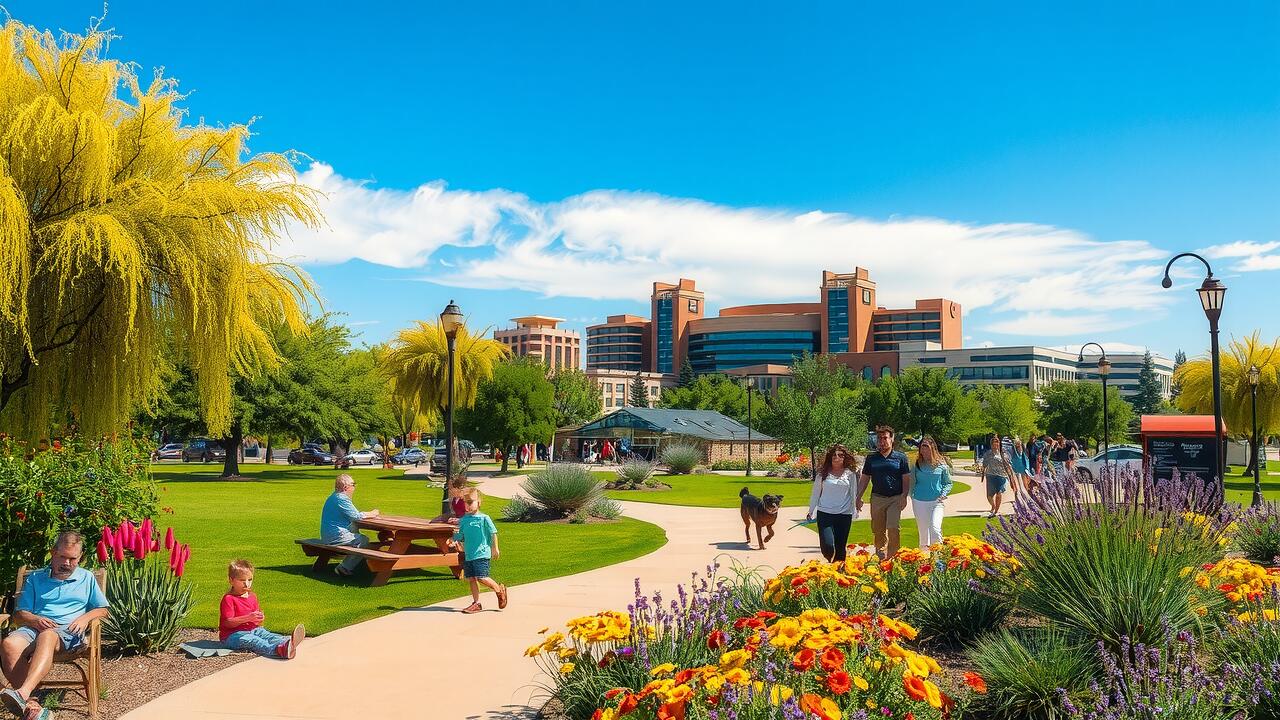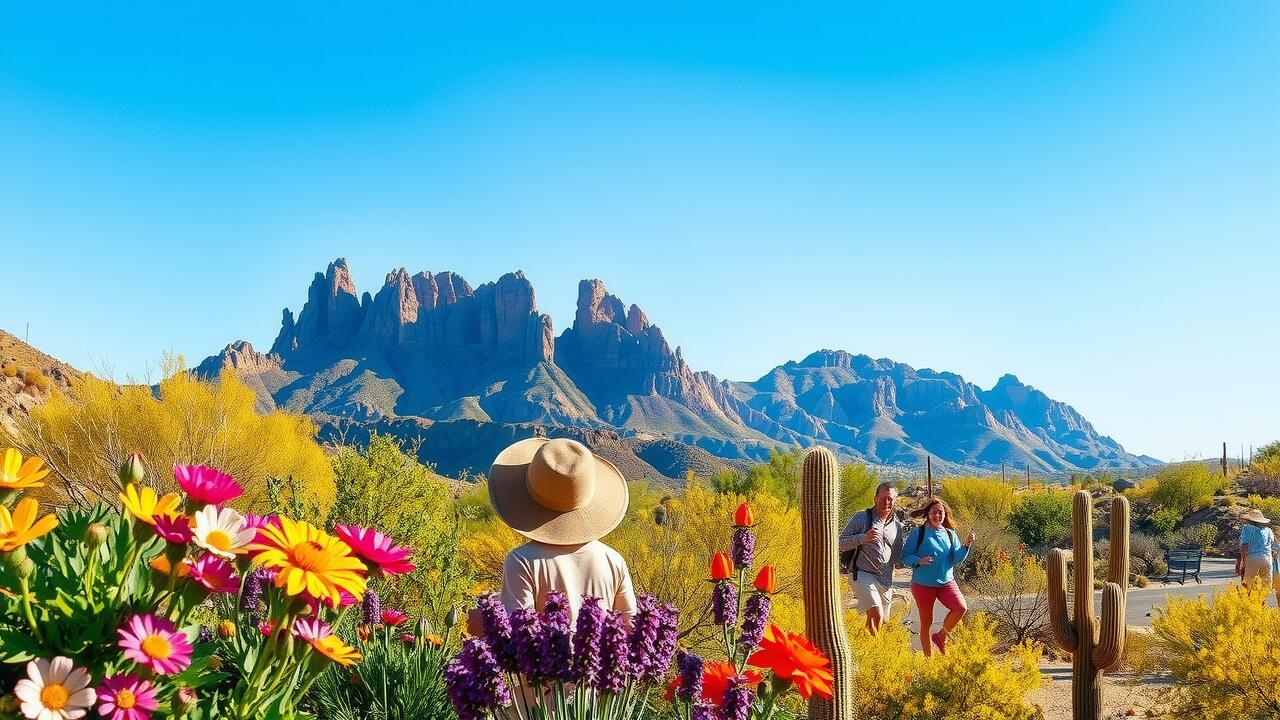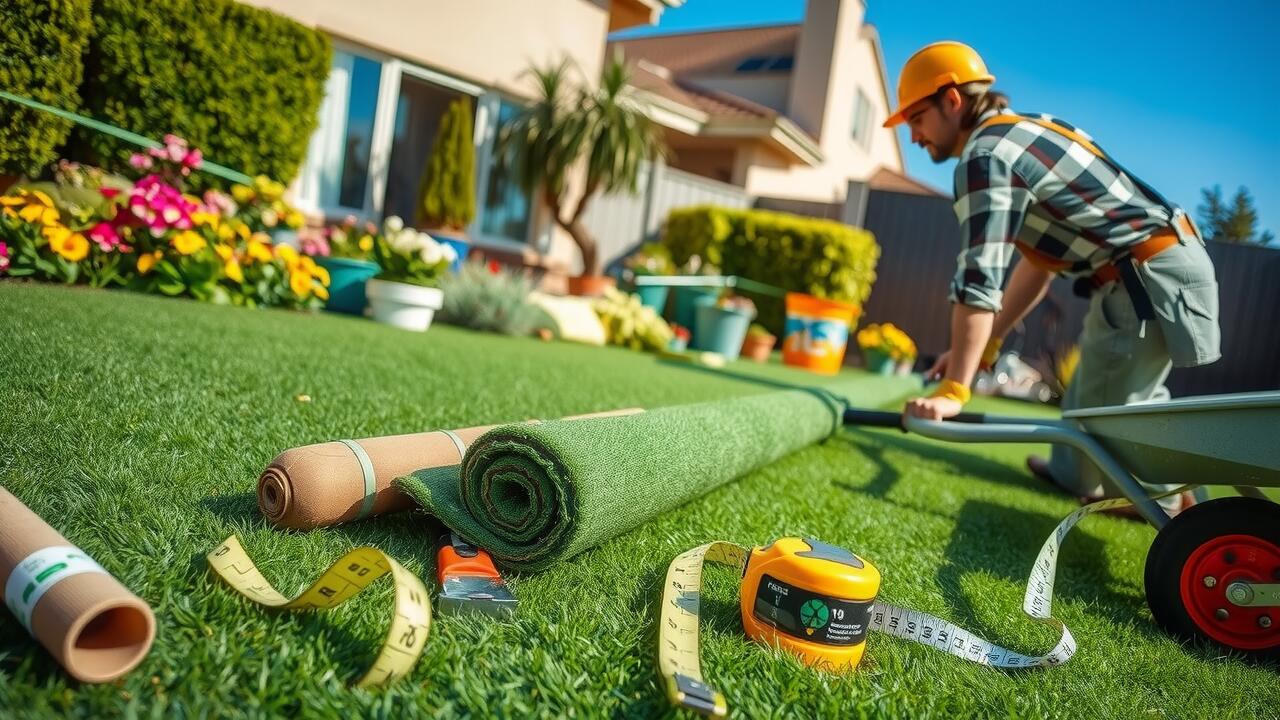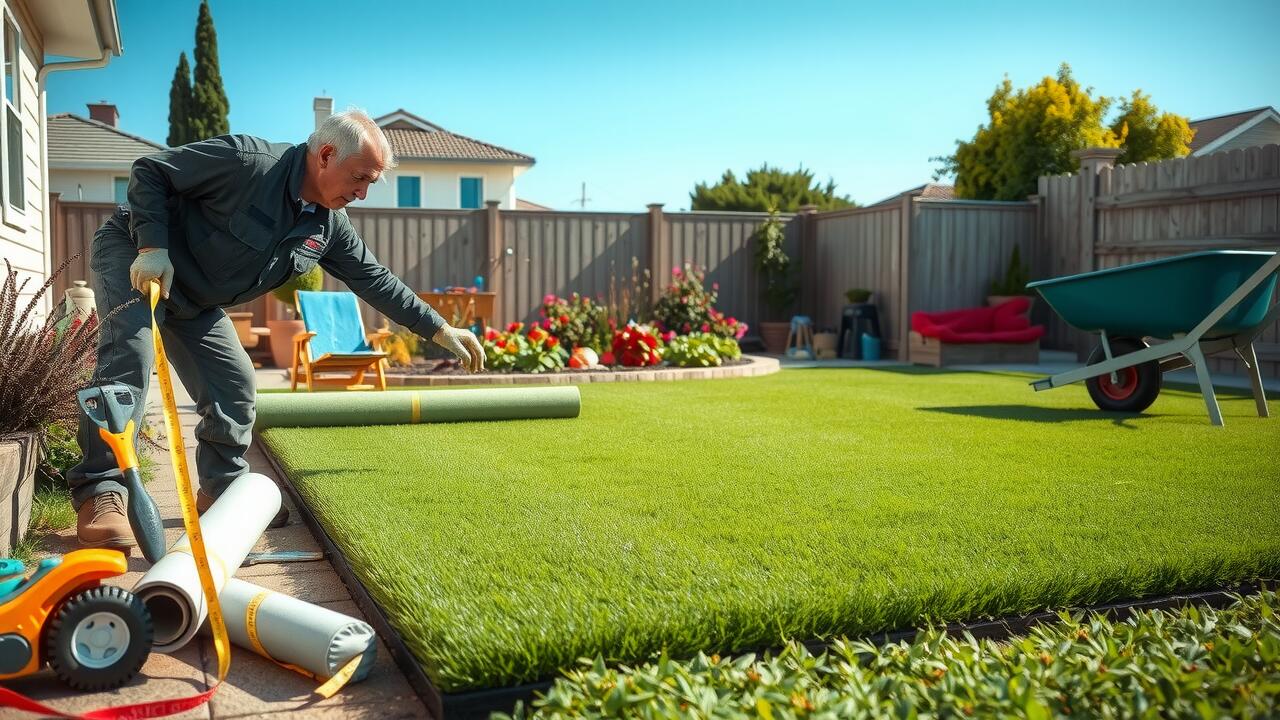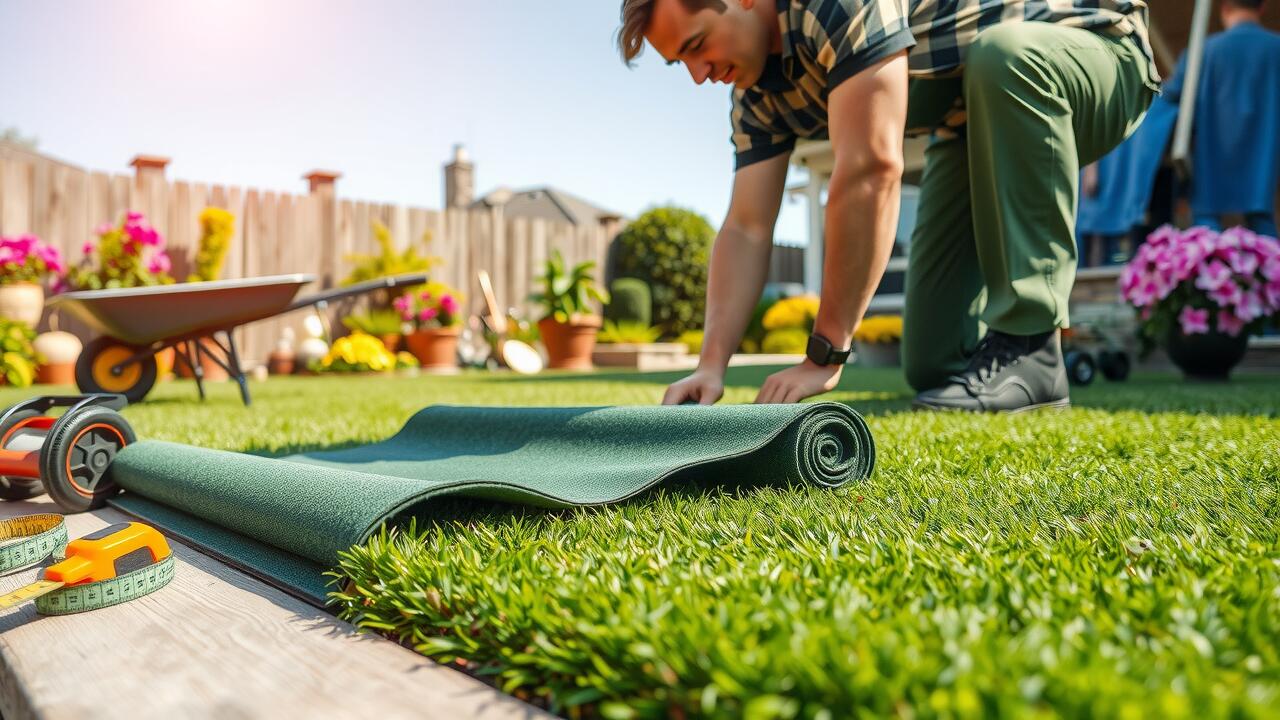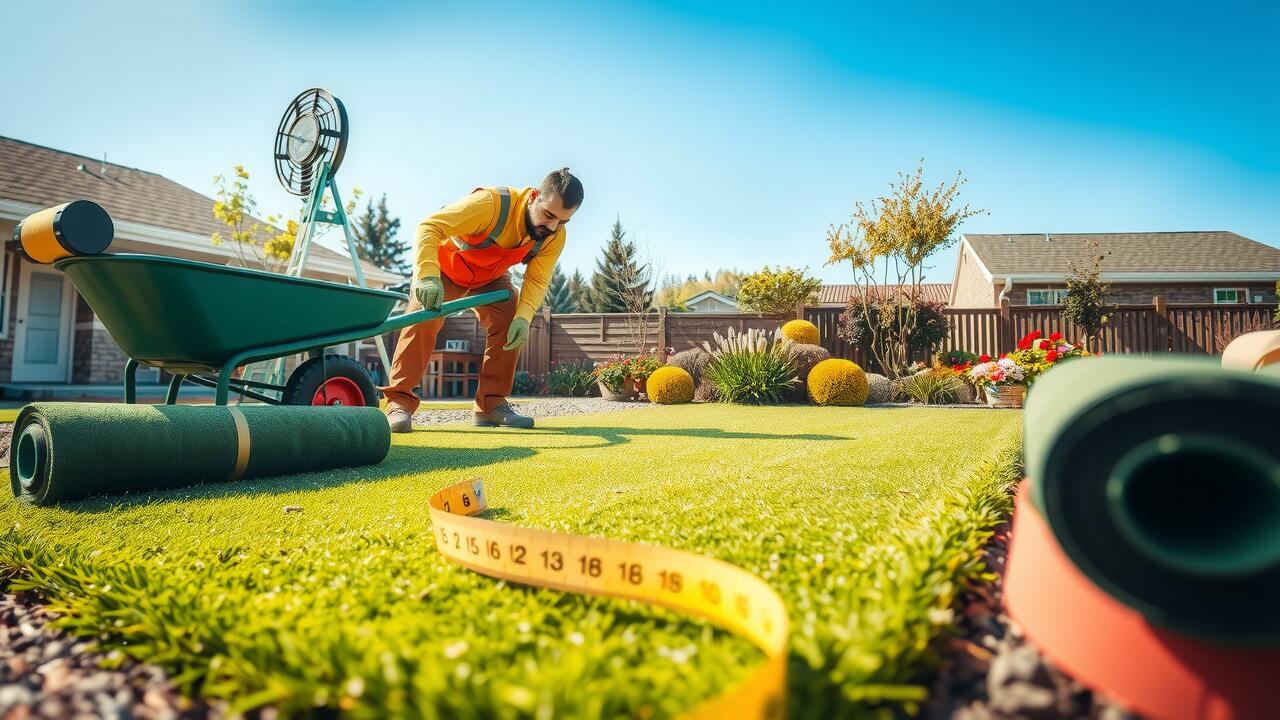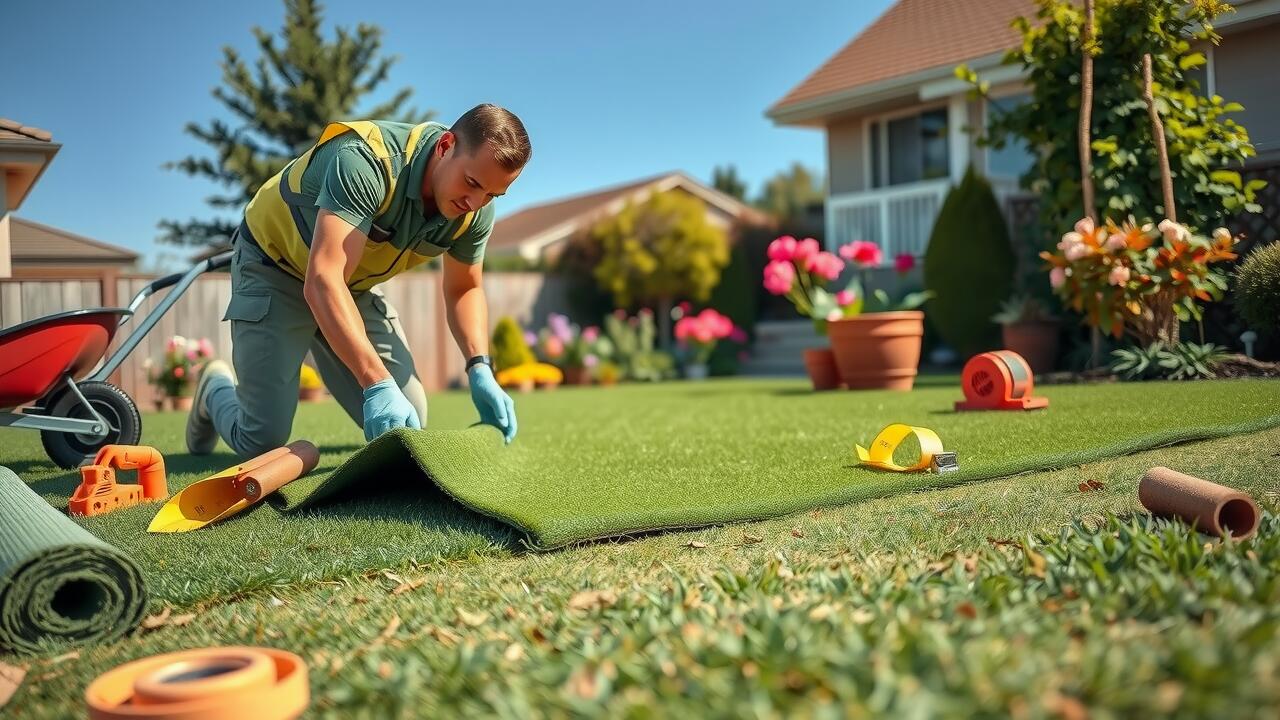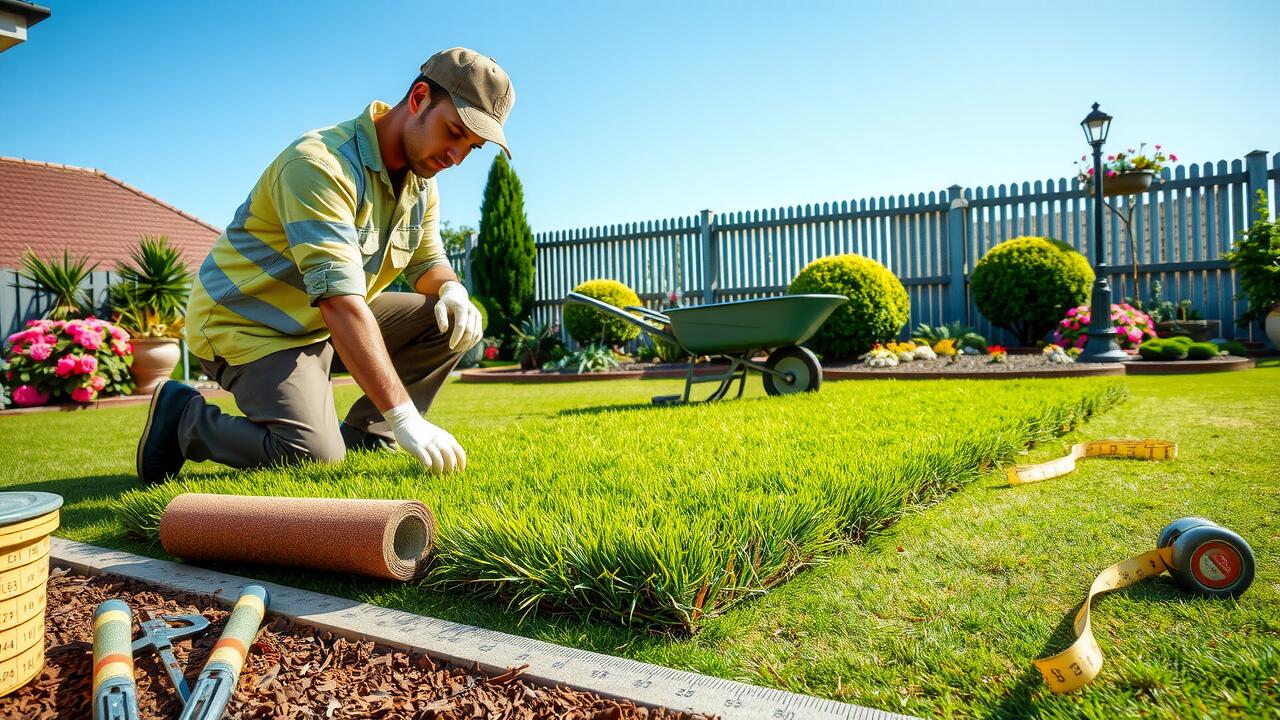Category: Uncategorized
Arizona Museum of Natural History
This museum offers a fascinating glimpse into Arizona’s natural and cultural history. Visitors can explore a variety of exhibits ranging from dinosaur skeletons to ancient Native American artifacts. The interactive displays provide an engaging experience for people of all ages. Special events and programs enhance the experience, often featuring guest speakers and hands-on activities.
The Arizona Museum of Natural History also houses a stunning collection of fossils that illustrate the state’s prehistoric past. Among the most popular exhibits are the life-sized dinosaur replicas that create a thrilling atmosphere. Families can enjoy educational opportunities while discovering the stories behind each display. Whether you’re a local resident or a traveler, this museum is a noteworthy stop that showcases the rich heritage of the region.
Arizona Museum of Natural History
Riparian Preserve at Water Ranch
The Riparian Preserve at Water Ranch spans over 1,300 acres and serves as a vital habitat for diverse wildlife. This ecological gem features several ponds, a variety of plant species, and miles of trails for walking, biking, or simply enjoying the great outdoors. Visitors can often spot an array of birds, making it a prime location for birdwatching enthusiasts. The lush vegetation and tranquil waters create a picturesque setting, offering opportunities for photography and reflection.
Educational programs are regularly held at the preserve, focusing on conservation, ecology, and the importance of riparian ecosystems. Interpretive signage throughout the area provides insights into the local flora and fauna, enhancing the experience for visitors of all ages. With its blend of natural beauty and educational value, the Riparian Preserve invites everyone to engage with Arizona’s natural heritage while enjoying a day out in a serene environment.
Riparian Preserve at Water Ranch
Superstition Springs Center
Located in the heart of Mesa, the Superstition Springs Center is a vibrant shopping destination featuring a mix of popular retailers and dining options. Visitors can explore over 100 stores, ranging from well-known department stores to niche boutiques. The center’s layout offers a pleasant shopping experience, complete with ample parking and walkable pathways. With its family-friendly atmosphere, it is a perfect place for both casual shoppers and families to spend time together.
In addition to shopping, the center hosts a variety of restaurants, allowing visitors to indulge in diverse culinary options. From quick bites to sit-down meals, there is something for everyone. Seasonal events and community activities often take place here, enhancing the center’s appeal as a local gathering spot. Strolling through the open-air spaces allows guests to enjoy the Arizona sunshine while exploring the retail landscape.
Superstition Springs Center
FAQS
What are some must-see attractions in Mesa, Arizona?
Some must-see attractions include the Arizona Museum of Natural History, Mesa Grande Cultural Park, Riparian Preserve at Water Ranch, and Superstition Springs Center.
Is the Arizona Museum of Natural History suitable for children?
Yes, the Arizona Museum of Natural History offers engaging exhibits that are educational and entertaining for visitors of all ages, making it a great destination for families with children.
What activities can visitors enjoy at the Riparian Preserve at Water Ranch?
Visitors to the Riparian Preserve can enjoy hiking, birdwatching, picnicking, and exploring the various trails and natural habitats.
Are there shopping and dining options at Superstition Springs Center?
Yes, Superstition Springs Center features a variety of shopping and dining options, including popular retail stores and diverse restaurants.
Can I find historical sites to visit in Mesa?
Absolutely! Mesa Grande Cultural Park is a significant historical site that showcases ancient Hohokam culture and is perfect for history enthusiasts.
Freestone Park
Freestone Park is a sprawling outdoor space that caters to families and individuals alike. With over 100 acres of beautifully manicured grounds, visitors can enjoy a variety of recreational activities. The park features several sports fields, picnic areas, and playgrounds. Fishing enthusiasts can take advantage of the ponds stocked with fish, providing a serene environment for casting a line. A network of walking and biking paths crisscrosses the landscape, making it easy to explore the park at a leisurely pace.
In addition to its recreational offerings, Freestone Park hosts numerous community events throughout the year. Families can participate in seasonal festivities, outdoor movie nights, and concerts in the park. For those looking to engage with the community, the park’s amenities include a skate park and an archery range. The vibrant atmosphere attracts residents and visitors, ensuring that there’s always something happening at this beloved local spot.
Freestone Park
Hale Centre Theatre
Located in the heart of Gilbert, the Hale Centre Theatre offers an exceptional experience for both locals and visitors. Known for its intimate seating arrangement and professional productions, this community theatre showcases a variety of performances, including classic musicals, contemporary plays, and original works. The close proximity of the audience to the stage enhances the theatrical experience, making each performance feel personal and engaging.
An inviting atmosphere surrounds the theatre, attracting families and theatre enthusiasts alike. The venue often hosts special events and educational programs that encourage community involvement and appreciation for the arts. With its commitment to high-quality productions and a strong connection to the local community, Hale Centre Theatre stands as a vibrant cultural hub in Gilbert.
Hale Centre Theatre
Cosmo Dog Park
A visit to Cosmo Dog Park is a must for dog lovers in Gilbert. This park features separate areas for small and large dogs, ensuring a safe and comfortable experience for all breeds. The spacious layout allows dogs to romp freely while their owners can relax in the shade provided by numerous trees. With agility equipment available, both pets and owners can enjoy an active day.
The park is not only a place for dogs to play but also a community hub for pet owners. Regular events and social gatherings take place throughout the year, fostering connections among fellow canine enthusiasts. Ample seating areas and walking paths enhance the overall experience, making it an ideal destination for a day out with your furry friend.
Cosmo Dog Park
FAQS
What are some outdoor activities to do in Gilbert, Arizona?
Outdoor activities in Gilbert include visiting Freestone Park for picnicking and recreational sports, exploring Cosmo Dog Park for dog-friendly fun, and enjoying the trails and open spaces at various parks throughout the town.
What shopping options are available in Gilbert?
In Gilbert, you can visit SanTan Village, an outdoor shopping center that features a variety of shops, restaurants, and entertainment options, making it a great spot for shopping and dining.
Is there any live entertainment in Gilbert?
Yes, Gilbert is home to the Hale Centre Theatre, which offers a range of live performances, including musicals and plays, providing a great option for entertainment enthusiasts.
Are there family-friendly attractions in Gilbert?
Absolutely! Freestone Park is perfect for families, featuring playgrounds, a fishing lake, sports fields, and picnic areas. Cosmo Dog Park is also great for families with pets, offering a fun environment for dogs to play.
What is a must-visit place in Gilbert for nature lovers?
Nature lovers should definitely visit Freestone Park, which boasts beautiful greenery, walking paths, and a fishing lake, offering a chance to enjoy the outdoors and embrace the natural beauty of Gilbert.
Schnepf Farms
A visit to a local favorite, Schnepf Farms offers an array of family-friendly activities throughout the year. The farm is renowned for its seasonal festivals, including the popular pumpkin and peach festivals that draw visitors from near and far. With a variety of attractions such as a petting zoo, hay rides, and a corn maze, there is something for everyone to enjoy.
In addition to the seasonal events, the farm also provides opportunities for learning about agriculture and sustainable farming practices. The on-site farm store showcases fresh produce and locally made products, allowing guests to take a piece of the experience home. Whether it’s a leisurely afternoon or a full day of fun, Schnepf Farms is a delightful destination for both residents and tourists.
Schnepf Farms
Saguaro Lake
This scenic reservoir offers a perfect blend of outdoor adventure and natural beauty. Nestled in the foothills of the Superstition Mountains, Saguaro Lake is known for its striking blue waters and towering saguaro cacti that frame the shoreline. Visitors can enjoy a variety of activities such as boating, fishing, and kayaking. The surrounding area is also great for hiking, with several trails providing breathtaking views of the landscape.
Wildlife enthusiasts will appreciate the diverse array of birds and other animals that inhabit the region. Early mornings or late afternoons provide the best opportunities for photography and spotting local wildlife. Picnic areas are available for families and friends looking to unwind amidst stunning scenery. Whether you’re seeking a day of relaxation or an active outing, Saguaro Lake caters to a range of interests, making it a beloved destination for locals and visitors alike.
Saguaro Lake
San Tan Historical Society Museum
The San Tan Historical Society Museum serves as a treasure trove of local history, showcasing the rich narrative of the San Tan Valley and its residents. Visitors can explore a variety of exhibits that highlight the area’s agricultural roots and development over the years. Photographs, artifacts, and memorabilia provide valuable insights into the community’s past, making it an engaging stop for history enthusiasts and families alike.
The museum often hosts events and educational programs that foster a deeper understanding of the region’s heritage. Knowledgeable volunteers and staff are available to guide guests through the exhibits, sharing stories that breathe life into the displays. This interactive approach not only preserves the history but also encourages community involvement and appreciation for the local culture.
San Tan Historical Society Museum
FAQS
What are some family-friendly activities at Schnepf Farms?
Schnepf Farms offers a variety of family-friendly activities including pumpkin picking in the fall, a petting zoo, hayrides, and seasonal festivals featuring live entertainment and local food vendors.
Are there hiking trails available in the Superstition Mountains?
Yes, the Superstition Mountains offer numerous hiking trails suitable for various skill levels. Popular trails include the Peralta Trail and the Siphon Draw Trail, which provide stunning views and opportunities for wildlife observation.
Can I go swimming at Saguaro Lake?
Yes, Saguaro Lake offers opportunities for swimming along designated areas, as well as other water activities like kayaking, paddleboarding, and fishing.
What can I learn at the San Tan Historical Society Museum?
The San Tan Historical Society Museum showcases the rich history of San Tan Valley and surrounding areas, featuring exhibits on local artifacts, historical photographs, and information about the community’s development over the years.
Is there an entry fee for visiting these attractions in San Tan Valley?
Entry fees vary by attraction; for example, Schnepf Farms may charge for special events and activities, while the San Tan Historical Society Museum may have a nominal donation or admission fee. It’s best to check their official websites for the most current pricing and details.
Horseshoe Park & Equestrian Centre
The Horseshoe Park & Equestrian Centre is a premier destination for equestrians and outdoor enthusiasts alike. Spanning over 48 acres, this facility offers a variety of amenities, including multiple arenas, stabling options, and ample parking. The park hosts numerous events throughout the year, from horse shows and rodeos to community gatherings. Its versatile layout accommodates a wide range of activities geared toward both competitors and spectators.
Visitors can enjoy the scenic landscapes that surround the park. Trails meander throughout the area, providing opportunities for walking, hiking, and horseback riding. Families often come to picnic and engage in recreational activities, taking advantage of the open space. With its engaging atmosphere and commitment to promoting equestrian culture, the facility serves as a vital hub for the local community.
Horseshoe Park & Equestrian Centre
Queen Creek Performing Arts Center
The Queen Creek Performing Arts Center serves as a vibrant cultural hub for the community. It showcases various performances, including musicals, plays, and concerts. Many local artists find a platform to express their creativity here. The intimate space is designed to enhance the audience’s experience, allowing for an up-close connection with each performance.
In addition to hosting events, the center offers classes and workshops for those interested in the arts. These educational opportunities cater to all age groups, fostering a love for performing arts among residents of Queen Creek. The facility not only enriches the cultural landscape but also encourages community engagement through its diverse programming.
Queen Creek Performing Arts Center
Desert Mountain Park
Nestled in the scenic beauty of Queen Creek, this park offers visitors a rejuvenating escape into nature. Guests can explore a variety of trails that wind through the stunning desert landscape. The park is ideal for hiking, mountain biking, and horseback riding. Its expansive terrain showcases the rich biodiversity of the Sonoran Desert. Families often find this location perfect for picnicking, with ample shaded areas and picnic tables available.
Wildlife enthusiasts can delight in the chance to observe local fauna that inhabit the area. The serene atmosphere makes it a popular spot for birdwatching, particularly during the cooler months when migratory birds pass through. Visitors frequently take advantage of the park’s educational programs, which highlight the unique ecological aspects of the desert environment. Whether seeking adventure or tranquility, this locale caters to a wide range of outdoor interests.
Desert Mountain Park
FAQS
What are the main attractions in Queen Creek, Arizona?
Some of the main attractions in Queen Creek include Horseshoe Park & Equestrian Centre, Schnepf Farms, Queen Creek Performing Arts Center, and Desert Mountain Park.
Is Horseshoe Park & Equestrian Centre suitable for families?
Yes, Horseshoe Park & Equestrian Centre is family-friendly and offers various activities, including horse shows, events, and recreational opportunities for all ages.
What activities can I enjoy at Schnepf Farms?
At Schnepf Farms, visitors can enjoy seasonal activities such as pumpkin picking, hayrides, and farm tours. There are also opportunities for farm-to-table dining and various festivals throughout the year.
Are there any performances at the Queen Creek Performing Arts Center?
Yes, the Queen Creek Performing Arts Center hosts a range of performances, including concerts, theater productions, and community events throughout the year.
What can I do at Desert Mountain Park?
At Desert Mountain Park, visitors can enjoy hiking, biking, and horseback riding on the scenic trails. The park also features picnic areas and beautiful views of the surrounding desert landscape.
DIY vs. Hiring a Professional
When deciding between a DIY approach and hiring a professional for turf installation, it’s essential to consider both the skills required and the potential savings. Many homeowners opt for the DIY route to save on labor costs. With careful planning and the right tools, installing artificial grass can be a manageable task. Resources such as online tutorials and guides provide valuable information that can help novices succeed. However, improper installation can lead to issues down the line, such as uneven surfaces or drainage problems.
On the other hand, hiring a professional for turf installation often guarantees a higher quality outcome. Experts bring experience, specialized equipment, and knowledge about local regulations that can make the installation process smoother. While this option typically costs more upfront, it may save money in the long run by reducing maintenance needs and extending the lifespan of the turf. Homeowners must weigh these factors when deciding which route to take, as the best choice depends on individual budget and confidence in their DIY skills.
Weighing the Costs of Each Approach
When contemplating the cheapest method for turf installation, weighing the pros and cons of DIY versus hiring a professional is essential. DIY projects can save money upfront, as you avoid labor costs associated with hiring experts. However, the initial savings may be offset by potential mistakes, which can lead to additional expenses for correction or replacement. It is crucial to consider your skill level and the time you can realistically dedicate to the project.
On the other hand, hiring a professional for turf installation presents a different set of costs and benefits. While this approach requires a higher initial investment, it often comes with the advantage of guaranteed workmanship and expertise. Professionals can efficiently navigate challenges that arise during installation, minimizing waste and ensuring a proper fit. This can ultimately lead to a longer-lasting and more visually appealing result, offering good value for the money spent.
Maintaining Your Artificial Grass
Regular maintenance of artificial grass is essential for preserving its appearance and prolonging its lifespan. Simple tasks such as brushing the fibers help to remove debris and keep the grass looking fresh. Occasional rinsing with water can eliminate dust and odors, especially in warmer climates. Keeping the area free of sticks and leaves will prevent buildup that could diminish the attractiveness of your turf installation.
Low-cost maintenance options can effectively enhance the durability of your artificial grass. Using a mixture of water and mild soap can help address stains and spills without damaging the fibers. Additionally, periodic inspections allow for early detection of any wear or damage. Addressing small issues before they escalate can save time and money down the line, ensuring the turf installation remains in excellent condition.
Low-Cost Maintenance Tips
Regular maintenance of artificial grass is essential to ensure its longevity and appearance. A simple approach involves brushing the grass with a stiff broom to keep the fibers upright and remove debris. Proper brushing also prevents matting and keeps the turf looking fresh, enhancing the overall aesthetic. Routine rinsing with a hose can help wash away dirt and pet waste, maintaining a clean surface.
Occasional checks for weeds and pests are necessary and can often be done without resorting to costly treatments. Applying a diluted vinegar solution can deter weeds without harming the turf. For those with pets, using a mixture of water and mild detergent can help eliminate odors. Awareness of manufacturer recommendations after turf installation will also guide maintenance practices and ensure your artificial grass remains vibrant for years.
Local Regulations and Permits
Before embarking on a turf installation project, it is crucial to understand the local regulations and permits that may apply. Different municipalities have varying requirements, and some might mandate permits for landscaping projects, including artificial grass. Checking with your local zoning office can provide insight into whether you need to apply for permits. Familiarizing yourself with these regulations can help you avoid potential fines and ensure your project complies with community standards.
In addition to permits, there may be specific guidelines regarding the materials used and the installation process. Some areas have rules governing the type and quality of artificial grass allowed. It is also advisable to verify if any homeowners’ associations have additional stipulations concerning turf installation. Taking the time to research these factors can save you time and money in the long run, ensuring a smooth and compliant installation.
Understanding Potential Costs
When considering the costs associated with laying artificial grass, it is crucial to account for all potential expenses involved in the turf installation process. These can include the price of materials, tools, and any necessary underlayment. Additionally, if you decide to hire a professional, labor costs will significantly affect your budget. Obtaining multiple quotes from installers can provide a clearer picture of the market rates and help you choose a route that aligns with your financial plan.
Local regulations and permitting fees can also play a role in the overall cost. Some areas may require permits for turf installation, which could add to your expenses. Being aware of these requirements beforehand can prevent unexpected costs and delays. Moreover, it is wise to check if there are local initiatives or rebates that could offset your expenses, making the financial commitment of artificial grass more manageable.
FAQS
What is the cheapest way to lay artificial grass?
The cheapest way to lay artificial grass is to take a DIY approach, which involves purchasing the materials yourself and installing them without professional help. This can significantly reduce labor costs.
Is it worth hiring a professional to install artificial grass?
Hiring a professional can ensure a high-quality installation and may save you time and effort. However, if you are looking to save money, doing it yourself is the more cost-effective option.
What are some low-cost maintenance tips for artificial grass?
Low-cost maintenance tips include regularly brushing the grass to keep it looking fresh, rinsing it with water to remove dust and debris, and using a leaf blower for quick clean-ups.
Are there any local regulations or permits required for installing artificial grass?
Depending on your location, you may need permits or to follow specific regulations regarding artificial grass installation. It’s best to check with your local government or homeowners’ association for any requirements.
How can I reduce the initial costs of purchasing artificial grass?
To reduce initial costs, consider shopping around for discounts, buying in bulk, looking for sales, or choosing a lower-grade product that still meets your needs.
Equipment and Technology Utilized
Turf installation requires specialized equipment that significantly contributes to its overall cost. Machinery such as sod cutters, turf rollers, and high-grade utility vehicles are essential for efficiently laying down and configuring the materials. These tools not only enhance the quality of the installation but also expedite the process, allowing contractors to complete projects in a timely manner. Investing in this advanced technology is crucial for professional turf installers who aim to deliver exceptional results.
Additionally, the technology utilized during turf installation has evolved. Innovations in irrigation systems and soil preparation techniques enable more precise and effective installations. Automated equipment can ensure uniformity in turf placement, and advanced grading tools help create optimal drainage systems. The incorporation of new technologies often necessitates higher upfront costs, which can influence pricing for both consumers and contractors alike.
Role of Advanced Tools in Installation
Advanced tools play a crucial role in the turf installation process. Heavy machinery, such as sod cutters and power rakes, facilitate the efficient preparation of the ground. These tools help ensure a level surface, which is vital for proper drainage and healthy growth of the turf. Additionally, specialized equipment for rolling and compacting the sod ensures that it adheres well to the soil, reducing air pockets that can hinder root development.
The use of technology in turf installation also enhances precision and speed. For instance, GPS-guided systems can plot out exact measurements for turf application, minimizing waste and optimizing resource allocation. These innovations not only streamline the installation process but also contribute to the overall quality of the finished product. Investing in these advanced tools incurs higher upfront costs but can lead to better long-term outcomes for both the installer and the end user.
Long-term Maintenance Considerations
Maintaining installed turf requires a commitment to ongoing care, which can significantly impact the overall investment. Regular maintenance tasks such as periodic cleaning, infill replenishment, and repairs due to wear and tear are essential for keeping the turf in optimal condition. This maintenance not only enhances the appearance but also prolongs the lifespan of the installation, ensuring that the initial costs are justified over time.
The choice of materials and installation methods also influences long-term upkeep. High-quality turf can reduce maintenance needs and costs. Conversely, cheaper options may require more frequent repairs or replacements, negating initial savings. Considering these factors is crucial when budgeting for turf installation, as they can lead to unexpected expenses in the future. Wise planning and investment in quality can lead to significant benefits in the longevity and aesthetic appeal of the turf.
Impact on Overall Costs
Turf installation involves various costs beyond the immediate materials and labor. The initial investment can be significant due to the need for high-quality synthetic grass and underlayment materials that ensure longevity and durability. Moreover, specialized equipment is often required to prepare the ground properly, reinforcing the initial expense. These factors contribute to a higher upfront cost that can be a decisive factor for many homeowners and businesses considering installation.
Ongoing maintenance also plays a crucial role in the overall cost of turf installation. While synthetic turf often requires less maintenance than natural grass, it is not entirely maintenance-free. Regular upkeep, such as debris removal, occasional brushing to keep the fibers upright, and infill replenishment are necessary to maintain optimal performance. Additionally, any repairs needed over time can add to the long-term financial commitment associated with turf installation. Understanding these costs can help clients better assess the total investment in their landscaping projects.
Seasonal Demand Fluctuations
Seasonal demand fluctuations can significantly impact the pricing of turf installation. During peak seasons, typically in late spring and early summer, demand for turf installation rises as homeowners and businesses seek to enhance their outdoor spaces. This increased demand puts pressure on suppliers and contractors, often leading to higher prices for both materials and labor.
Conversely, during the off-peak months, such as late fall and winter, demand tends to drop. Contractors may lower their prices to attract business during these slower periods. However, the availability of high-quality turf can also be affected by seasonal factors, such as growing conditions and supplier availability, leading to potential variations in cost and quality throughout the year.
Price Variability Throughout the Year
Turf installation costs can experience significant fluctuations throughout the year. During peak seasons, particularly in early spring and late summer, demand for turf installation tends to surge. Homeowners aiming to enhance their outdoor spaces are often eager to start projects during these times, leading to increased labor and material costs as suppliers and contractors may have limited availability.
Conversely, during the off-peak months, such as late fall and winter, the demand for turf installation diminishes. Many contractors may offer discounts to attract customers during these quieter periods. This seasonal variability can heavily influence overall pricing, making it essential for prospective buyers to be aware of the timing when considering their turf installation projects.
FAQS
What factors contribute to the high cost of turf installation?
The high cost of turf installation is influenced by several factors, including the quality of the materials used, the advanced equipment and technology required for installation, labor costs, long-term maintenance considerations, and seasonal demand fluctuations.
How does equipment and technology affect turf installation costs?
Turf installation often requires specialized equipment and advanced tools that can increase the overall installation cost. These tools help ensure a proper installation, which can lead to a better-performing and longer-lasting turf.
Are there ongoing costs associated with turf maintenance?
Yes, after installation, there are ongoing maintenance costs to consider, such as regular cleaning, occasional repairs, and necessary treatments to keep the turf in good condition. These can add to the overall long-term expenses.
Does the time of year impact the cost of turf installation?
Yes, seasonal demand fluctuations can significantly affect the price of turf installation. During peak seasons, prices may rise due to higher demand for turf services, while off-peak times may offer more competitive rates.
Is it worth investing in high-quality turf despite the initial cost?
Investing in high-quality turf can be worthwhile in the long run, as it typically requires less maintenance, offers better durability, and can enhance the aesthetic value of your property, ultimately saving you money over time.
Seasonal Pricing Variations
Seasonal fluctuations significantly impact the price of turf, making it crucial for buyers to be aware of the timing of their purchase. Generally, demand peaks during the spring and early summer months, as homeowners and businesses look to enhance their outdoor spaces. This increased demand can lead to higher prices for both materials and turf installation services. Conversely, purchasing turf in the fall or winter months often results in better deals as suppliers aim to clear out inventory before the colder weather sets in.
Another factor influencing pricing is the market’s competitive dynamics, which can vary seasonally. During peak seasons, turf installers may charge more due to their busy schedules and increased labor costs. In contrast, off-peak times might offer lower rates as installers seek to maintain a steady workflow. Customers can capitalize on these seasonal variations by planning their turf installation projects strategically, ensuring they secure the best possible pricing throughout the year.
When to Buy Turf
Timing can significantly influence the cost and availability of turf. Generally, the best time to purchase turf is during the spring and early fall. These seasons are optimal for turf installation as temperatures are mild, allowing for better rooting and establishment. Many suppliers offer sales during this time, making it a financially savvy choice for homeowners and landscapers alike.
Purchasing turf during the off-season, such as mid-winter or peak summer, may result in higher prices and limited selection. Additionally, installation during extreme weather can stress the sod, leading to poor growth or an increased need for maintenance. Monitoring local market trends and planning purchases around favorable conditions can lead to a healthier lawn and a more economical overall investment.
Comparing Natural and Synthetic Turf
Natural turf offers a lush, green aesthetic that is often preferred for its natural feel and environmental benefits. It requires regular maintenance, including mowing, watering, and fertilization. Natural grass can be affected by weather conditions, which may lead to increased costs during droughts or heavy rains. Turf installation for natural grass also demands specific seasonal considerations to ensure successful growth.
Synthetic turf, on the other hand, provides a low-maintenance alternative that remains vibrant year-round. It eliminates concerns about water usage and pests while providing a durable playing surface. The initial turf installation costs may be higher, but long-term savings on maintenance can make it a cost-effective option. The choice between natural and synthetic turf ultimately depends on individual preferences, environmental considerations, and budget constraints.
Pros and Cons of Each Type
Natural turf offers a sense of authenticity and a natural aesthetic that many homeowners desire. It provides a soft surface that is conducive to activities like playing and lounging. Its ability to absorb heat can also contribute to a cooler environment in summer months. However, natural grass requires regular maintenance, including mowing, watering, and fertilizing, which can increase long-term costs. Additionally, natural turf is susceptible to pests, disease, and harsh weather conditions that may affect its appearance and health.
Synthetic turf has gained popularity due to its low maintenance requirements. With synthetic grass, there is no need for mowing or frequent watering, resulting in lower upkeep costs over time. It can withstand heavy foot traffic without becoming damaged and retains its vibrant appearance year-round. Yet, the initial investment for turf installation can be significantly higher compared to natural grass. Some individuals also express concerns about the environmental impact of synthetic materials and the potential heat retention during hot weather.
Regional Price Differences
Regional variations in pricing for turf installation can significantly affect overall costs. Different areas may have varying availability of turf products, local market demands, and transportation costs that can impact pricing. Urban regions might experience higher prices due to increased demand and a larger consumer base, while rural areas may benefit from more competitive rates.
Additionally, climate plays a role in determining the types of turf that are most suitable for specific locations. For instance, regions with warmer temperatures may lean towards heat-resistant options, influencing the types of synthetic or natural turf available. Local suppliers might adjust their prices based on the popularity of certain styles of turf or specific installation practices favored by landscapers in that area.
How Location Affects Costs
The cost of turf installation can vary significantly based on geographic location. Urban areas often see higher prices due to increased demand, elevated labor costs, and potential transportation fees for materials. In contrast, suburban and rural regions may offer more competitive pricing due to lower operational expenses and a more abundant supply of local resources. Understanding these regional dynamics is essential for budget planning.
Climate also plays a crucial role in determining turf costs. Regions with extreme weather conditions may require specialized turf varieties that can withstand drought or excessive moisture. This can lead to higher upfront costs for both the turf material and the installation process. Homeowners should consider these factors when evaluating the overall cost of turf installation in their specific locality.
FAQS
How much does 2000 square feet of natural turf cost?
The cost of 2000 square feet of natural turf can vary based on the type of grass and your location, but it generally ranges from $400 to $2,000, including installation.
What is the cost of 2000 square feet of synthetic turf?
Synthetic turf can cost between $2,000 and $10,000 for 2000 square feet, depending on the quality of the material and installation fees.
Are there seasonal pricing variations for turf?
Yes, prices can fluctuate based on the season. Turf is often cheaper in the fall and winter months, while prices may increase in the spring and summer due to higher demand.
How do regional differences affect the price of turf?
Turf prices can vary significantly by region due to factors like local labor costs, turf availability, and climate conditions that influence the type of grass or turf that grows best.
What factors should I consider before purchasing turf?
Before purchasing turf, consider factors such as the type of turf (natural vs. synthetic), your budget, local climate, maintenance requirements, and the intended use of the space (e.g., lawn, sports field, or decorative landscaping).
Additional Features to Consider
When planning for turf installation, it’s important to account for additional features that can enhance the overall quality and utility of your space. Edging is crucial as it helps maintain clean lines and prevents the turf from spreading into other areas. A solid edging system will also facilitate easier lawn maintenance. Moreover, incorporating proper drainage is essential to prevent water accumulation, which can lead to mold and unattractive puddles. Ensuring effective drainage can dramatically extend the lifespan of your turf.
Irrigation systems are another key consideration. While synthetic turf is often designed to require less watering, having an irrigation plan in place can help keep surrounding plant life healthy. This is particularly beneficial if your turf installation is adjacent to flower beds or landscaped areas. Many homeowners opt for drip irrigation or soaker hoses to minimize water waste and maintain the aesthetics of their overall yard. These features not only improve functionality but also enhance the beauty and longevity of your turf investment.
Edging, Drainage, and Irrigation Systems
When planning a turf installation, incorporating features like edging, drainage, and irrigation systems is essential. Edging helps define the perimeter of your artificial grass, providing a clean and professional look. There are various materials to choose from, such as plastic, metal, or wood. Choosing the right edging solution can enhance the overall aesthetics while also preventing the turf from spreading beyond the intended area.
Drainage is another critical component of turf installation, ensuring proper water flow and preventing pooling. Proper drainage systems can help maintain the longevity of the turf by reducing issues related to water accumulation. Additionally, integrating an irrigation system may seem unnecessary for artificial grass, yet it can play a role in keeping the area clean and supporting any surrounding plant life. Each of these features contributes to the overall performance and appearance of your new turf.
Maintenance Expenses Post-Installation
After turf installation, ongoing maintenance expenses play a significant role in the overall cost of owning artificial grass. While artificial turf typically requires less care than natural grass, there are still essential upkeep tasks to budget for. This includes periodic cleaning to remove debris and ensure the surface remains safe and attractive. Additionally, occasional infill replenishment may be necessary to maintain the turf’s appearance and performance over time.
Another consideration is the potential need for repairs. Although high-quality artificial turf is designed to withstand wear and tear, factors such as heavy foot traffic or environmental conditions can lead to issues. Setting aside funds for any necessary repairs ensures that your investment remains in excellent condition. Overall, planning for these maintenance expenses post-installation will help you enjoy your turf investment for many years.
Long-term Care and Upkeep
Long-term care and upkeep of artificial turf are essential for maintaining its appearance and longevity. Regular maintenance routines typically involve brushing the fibers, ensuring they remain upright and free from debris. Occasionally, occasional infill replenishment may be necessary to replace any that has settled over time. Proper care enhances the overall durability of the material and helps keep your lawn looking fresh.
Post-turf installation, it is crucial to monitor for any signs of wear or damage. While artificial turf is designed to withstand a variety of weather conditions, UV exposure and heavy foot traffic can still impact its quality. Routine inspections and prompt attention to any issues, such as seams or edges pulling up, can help prevent larger, more costly repairs down the line. Ensuring that your turf is in good condition not only preserves its aesthetic appeal but also maximizes your investment.
Comparing Professional Installation vs. DIY
When considering turf installation, one significant factor is the choice between professional services and a DIY approach. Professional installation usually comes with a higher upfront cost but often guarantees quality and durability. Experts have the tools and experience to ensure proper installation, which can prevent issues down the line. They can also navigate challenges like uneven terrain or complex drainage requirements effectively.
On the other hand, a DIY install can lead to substantial savings. For those with some level of handy skills, taking on the project personally may provide a sense of satisfaction. However, it is crucial to research the necessary steps, tools, and materials involved in turf installation. Mistakes made during the process can lead to additional costs for corrections later. Ultimately, weighing the desire for a successful outcome against budgetary constraints is essential when deciding between professional help and a do-it-yourself project.
Pros and Cons of Each Approach
Choosing between professional installation and a DIY approach for turf installation has its respective advantages and disadvantages. Engaging professionals often guarantees a higher quality finish, as these experts bring experience and knowledge of best practices. Their access to specialized tools can also lead to a faster and more efficient process. However, hiring professionals entails a significant financial commitment. Homeowners may find this cost prohibitive, especially if they’re on a tight budget and already facing rising expenses.
On the other hand, opting for a DIY turf installation allows for complete control over the project and can lead to substantial savings. Many resources are available online to guide homeowners through the installation process. A potential downside arises from the learning curve associated with the task. Mistakes in preparation or installation can result in uneven surfaces or premature wear, ultimately diminishing the aesthetic and functional value of the turf. This option also demands significant time and effort, which can be taxing for busy individuals.
FAQS
What is the average cost of purchasing turf materials for a DIY installation?
The average cost for turf materials can range from $2 to $8 per square foot, depending on the quality and type of turf chosen.
Are there additional costs associated with turf installation aside from materials?
Yes, additional costs may include edging, drainage systems, and irrigation setup, which can add $1 to $5 per square foot to your overall budget.
How much can I expect to spend on maintenance for my turf after installation?
Maintenance costs can vary, but generally, you may spend between $200 to $600 annually on upkeep, including cleaning, repairs, and occasional infill replacement.
What are the advantages of installing turf myself instead of hiring a professional?
DIY installation can save you money on labor costs and provide a sense of accomplishment, but it requires time, effort, and some technical knowledge.
What are some potential drawbacks of a DIY turf installation compared to professional services?
Potential drawbacks include the risk of improper installation leading to drainage issues, uneven surfaces, or a shorter lifespan of the turf if not installed correctly.
Laying Out the Turf
Before starting your turf installation, it’s essential to prepare the area properly. Measure the space where the turf will be laid to ensure you purchase the correct amount. Clear the ground of any debris, rocks, or existing grass that could interfere with the laying process. Level the surface using a roller or rake, ensuring there are no high spots or dips, which can affect the appearance and drainage of the turf once installed.
Once the area is prepped, begin laying out the turf according to the planned design. Start at one edge and gradually move across the area, laying strips side by side. Ensure that the grass blades all face the same direction for a natural look. It is advisable to stagger the seams of each strip to create a more cohesive and appealing finish. Check for proper alignment regularly as you work to avoid any misplacements that could detract from the finished product.
Techniques for Efficient Placement
Achieving an efficient layout during turf installation starts with careful planning. Measure the area to determine the amount of turf required, allowing for some overlap on edges to ensure full coverage. Use stakes or spray paint to mark the dimensions on the ground, providing a clear visual guideline as you work. This precise layout will minimize waste and ensure you have enough turf to cover the entire space.
When placing the turf sections, unroll them in the direction that needs less cutting. Position the seams where they are least visible, such as along curves or against fences. Work from a finished edge, laying each piece snugly against the previous section. This method reduces unevenness and helps maintain a consistent appearance across the entire installation.
Securing the Turf
Securing the turf is crucial to ensure it stays in place and maintains its quality over time. One effective method for anchoring your turf during installation is to use landscape staples or spikes. These should be driven into the ground at the perimeter and throughout the sections of turf to keep it firmly secured. It’s important to space them appropriately, generally every 12 to 18 inches, depending on the size of the area being covered. Proper anchoring prevents shifting or lifting, enhancing the durability of your turf installation.
In areas where the turf meets existing landscaping features, additional measures may be necessary to create a seamless look. Using adhesive or specialized turf glue along seams can help bind sections together. This not only improves the aesthetic appeal but also prevents water from seeping underneath and causing potential damage. By paying close attention to the details during turf installation, you can achieve a professional finish that withstands environmental factors and daily use.
Methods for Anchoring Your Turf
Securing turf is essential for a successful turf installation. One of the most common methods involves using landscape staples, which are typically U-shaped metal fasteners. These staples can be driven into the ground at the periphery of the turf pieces. Spacing them about every 6 to 12 inches along the edges ensures the turf remains anchored in place. This method is particularly effective on flat surfaces where strong winds or foot traffic may otherwise displace the turf.
Another effective anchoring method involves the use of infill materials, such as sand or rubber granules. Spreading a layer of these materials across the surface of the turf adds weight and helps keep the grass blades upright. This approach is especially beneficial for residential lawns or playgrounds where turf installation requires durability and resilience. Applying infill not only stabilizes the turf but also enhances its overall appearance, providing a more natural look that mimics real grass.
Managing Seams Between Turf Sections
Proper management of seams between turf sections is crucial for achieving a natural look in turf installation. When laying out the turf, make sure the seams are aligned for a cohesive appearance. Overlapping the edges slightly can help in minimizing gaps. It’s important to use high-quality turf that matches in color and texture to reduce the visibility of seams.
Once the turf sections are laid, focus on securing the seams to enhance stability and aesthetics. Use seam tape or adhesive to bond the edges together firmly. For added security, you can apply infill materials along the seams to encourage better integration. Regularly check the seams during maintenance to ensure they remain secure over time, maintaining the overall integrity of the turf installation.
Tips for Seamless Appearance
Achieving a seamless appearance in turf installation requires careful attention to detail. Start by selecting the right type of turf that closely matches the existing landscape. This choice not only ensures a more natural look but also helps in blending the seams. When placing the pieces, it’s essential to align the fibers in the same direction to prevent visible differences in shading and texture.
Trimming the edges of the turf sections precisely enhances the continuity of the appearance. Utilize a sharp utility knife to make clean cuts, as jagged edges can lead to noticeable gaps or overlaps. After laying your turf, focus on infilling the seams with sand or infill materials to help secure the edges and create a more uniform surface. This extra step in turf installation can significantly enhance the overall aesthetic, making the seams less detectable.
FAQS
What materials do I need to install turf?
To install turf, you will need turf rolls, a utility knife, a ruler or measuring tape, landscaping staples or pegs, turf adhesive, a seam tape, and a rake. Additionally, you may want to have a roller or carpet stretcher for a smooth finish.
How do I prepare the ground before laying turf?
Begin by clearing the area of any debris, rocks, and old grass. Then, level the soil and compact it using a roller. It’s also important to ensure proper drainage, so consider incorporating a sand base if needed.
Can turf be installed over existing grass?
It’s not recommended to install turf over existing grass as it can lead to uneven surfaces and drainage issues. It’s best to remove the old grass and prepare the ground as mentioned.
How do I secure the turf to prevent it from shifting?
You can secure the turf by using landscaping staples or pegs around the edges and seams. Additionally, applying turf adhesive along seams can help keep the sections in place.
What should I do if my turf has seams that are visible?
To manage visible seams, make sure the edges of the turf sections are aligned properly and use seam tape and adhesive to secure them. Additionally, brushing the fibers in the opposite direction can help create a more seamless appearance.
Common Signs of Wear and Tear
Wear and tear on artificial turf can manifest in several noticeable ways. One of the most common signs is matting, where the fibers lose their upright position and clump together. This often occurs in high-traffic areas, making the surface look worn and less visually appealing. Additionally, discoloration can develop over time due to prolonged exposure to sunlight, which can fade the vibrant colors of the turf after installation.
Another significant indicator of wear is the loss of infill material, which helps maintain the turf’s structure and performance. As the infill is displaced through use or weather, the turf may begin to feel hard underfoot and lose its shock-absorbing qualities. Regular inspections of the turf installation can help property owners identify these issues early, allowing for timely maintenance or replacement to ensure optimal performance and appearance.
Identifying When to Replace
Identifying when to replace artificial turf is crucial for maintaining aesthetics and performance. Key indicators include visible wear patterns, matting of the fibers, and discoloration due to UV exposure. Cracks and tears may also appear, compromising the turf’s integrity and safety. Regular inspections can help spot these issues early, allowing for timely action before the condition worsens.
The decision to replace turf should consider usage patterns and the original quality of the turf installation. High-traffic areas may show signs of wear more quickly compared to less-used sections. Additionally, aging turf can lead to reduced drainage efficiency, causing pooling of water after rain. Regular maintenance can extend the life of artificial turf, but recognizing these signs will help determine the appropriate time for a replacement.
Comparison with Natural Grass
Artificial turf offers several advantages over natural grass, particularly in terms of maintenance and durability. Unlike natural grass, which requires regular watering, mowing, and fertilization, turf installation eliminates these ongoing costs and labor. Homeowners and facility managers can enjoy a consistently green and lush appearance without the hassles associated with natural grass upkeep. This makes synthetic options appealing for both residential and commercial landscapes.
The lifespan of artificial turf typically outlasts that of natural grass, which can wear down season after season. With proper care, synthetic turf can maintain its integrity for up to 15 years or more, depending on usage and quality. In contrast, natural grass often requires reseeding or patching to stay healthy, which can lead to additional expenses over time. Choosing turf installation can therefore represent a more long-term investment, with fewer unforeseen costs related to ground maintenance.
Lifespan Differences
Artificial turf typically has a longer lifespan than natural grass, with most products designed to last between 15 to 25 years, depending on factors such as quality, maintenance, and environmental conditions. In contrast, natural grass requires regular upkeep, including watering, mowing, and fertilization. Over time, the demands of maintaining a natural lawn can become costly and labor-intensive.
When considering turf installation, choosing high-quality synthetic options can significantly extend the lifespan of the surface. Some premium turfs use advanced materials and technology, which not only enhance durability but also improve performance. The lifespan difference becomes apparent when factoring in the consistent upkeep required for natural grass compared to the lower maintenance demands of artificial options.
Benefits of Investing in High-Quality Turf
Investing in high-quality turf can significantly enhance the longevity and performance of your outdoor spaces. Quality materials designed to withstand various weather conditions lead to improved durability and appearance. Through proper turf installation, homeowners can experience a surface that remains vibrant and functional for years, with minimal maintenance required compared to lower-grade options. This durability translates to better resistance against fading, tearing, and other forms of wear.
High-quality turf also offers cost-effective benefits in the long run. Though the initial investment may be higher, the reduced need for repairs and replacements makes it a smart choice for those looking to maintain their landscapes effectively. Additionally, high-quality products often come with warranties, providing peace of mind and further financial protection. Ultimately, choosing superior turf leads to both aesthetic and practical advantages for your property.
Long-Term Cost Savings
Investing in high-quality artificial turf can lead to significant long-term cost savings. Although the initial cost of turf installation may be higher compared to natural grass, the reduced maintenance expenses offset this investment over time. Homeowners do not need to spend on mowing, fertilization, or watering, which can add up considerably each year. Additionally, artificial turf eliminates the need for pest control treatments, further decreasing ongoing costs.
The durability of quality turf also contributes to cost savings. An excellent installation can last 15 to 25 years, depending on the materials and usage. This longevity means fewer replacements compared to natural grass, which often requires reseeding or complete replacement due to wear and climatic challenges. By choosing superior turf installation, property owners can enjoy a beautiful and functional landscape while minimizing long-term financial commitments.
FAQS
How long can I expect my artificial turf to last?
On average, high-quality artificial turf can last between 10 to 20 years, depending on factors such as usage, maintenance, and the quality of the product.
What are the common signs that my artificial turf needs to be replaced?
Common signs include matting, discoloration, visible seams, and a decrease in shock absorption. If these signs are evident, it may be time to consider replacement.
How does artificial turf compare to natural grass in terms of lifespan?
Artificial turf generally has a much longer lifespan than natural grass, which typically requires regular reseeding and replacement every few years due to wear and environmental factors.
What factors can influence the lifespan of artificial turf?
Factors that can affect the lifespan include the quality of the turf material, the amount of foot traffic it receives, exposure to UV rays, and the level of maintenance performed.
Are there long-term cost savings associated with investing in high-quality artificial turf?
Yes, while the initial investment may be higher, high-quality artificial turf can lead to long-term savings by reducing water costs, maintenance expenses, and the need for regular replacement that comes with natural grass.
